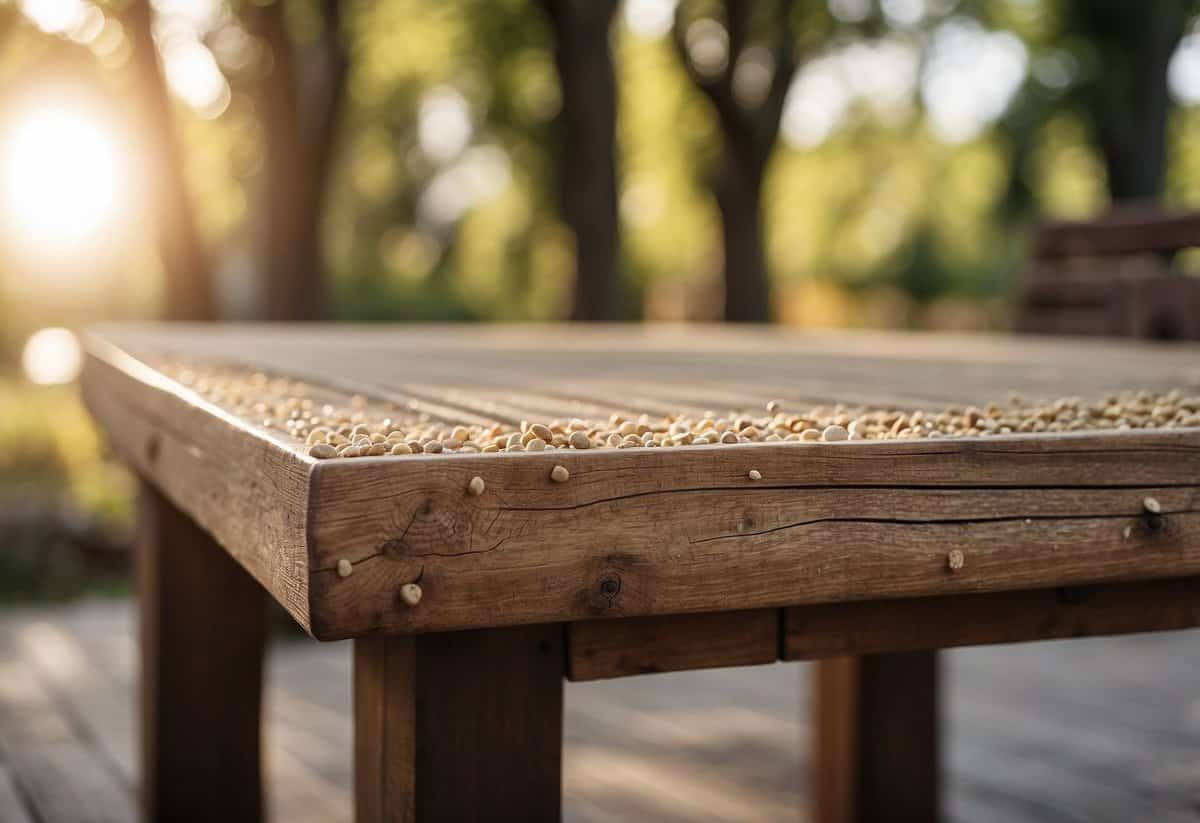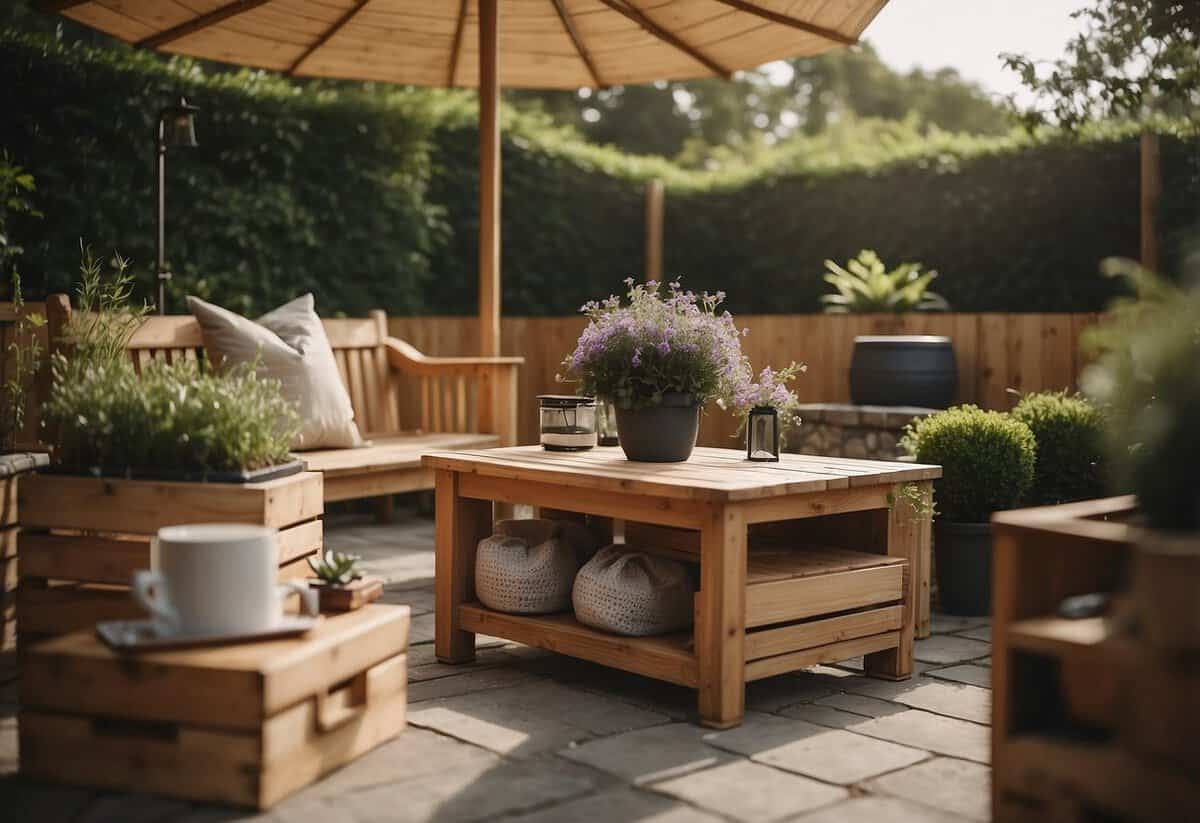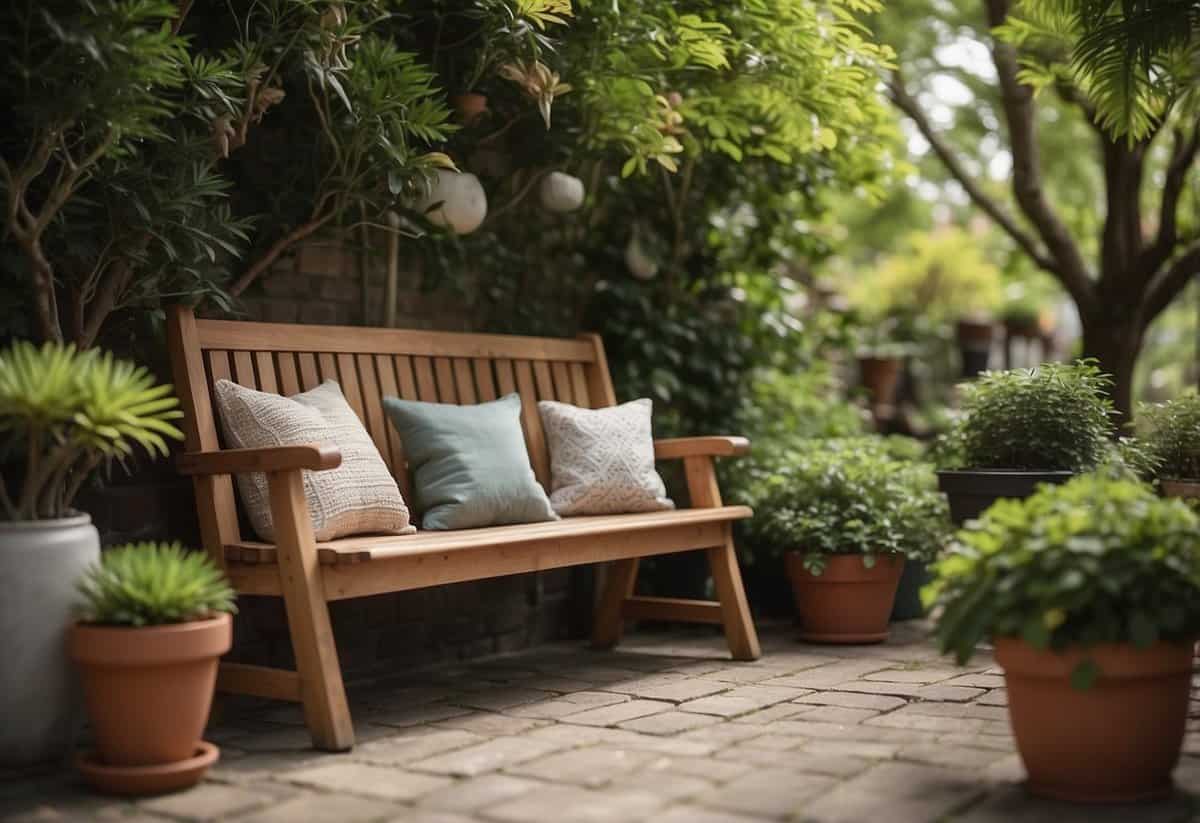Wooden Garden Furniture Maintenance Tips: Easy Ways to Prolong Their Life
Wooden garden furniture can greatly enhance the beauty and comfort of your outdoor space. Keeping it in good condition ensures that it lasts for many years and stays looking its best. Whether you have a teak bench, a pine table, or another type of wooden furniture, regular maintenance is key.

What steps should you take to keep your wooden garden furniture looking its best? This article will guide you through practical and simple tips for cleaning, protecting, and maintaining your outdoor wood pieces. With a little care and attention, your garden furniture can stay beautiful through all seasons.
1) Clean furniture regularly

Keeping your wooden garden furniture clean is essential for its longevity. Start by removing any debris like leaves or dirt using a soft-bristle brush or dry cloth. This prevents scratches when you do a deeper clean.
Mix mild soap with warm water to create a gentle cleaning solution. Use a cloth soaked in this mixture to wipe down the furniture.
After cleaning, wipe the furniture with a damp cloth to remove any soap residue. This step helps avoid dried soap marks, keeping your furniture looking fresh and well-maintained.
2) Apply Protective Coatings

Applying protective coatings is crucial for maintaining wooden garden furniture. Start by cleaning the furniture thoroughly to remove any dirt or mildew.
Use a high-quality wood sealant to protect against moisture and UV rays. Ensure the surface is smooth by sanding before application.
Reapply these coatings annually to keep the wood looking fresh and strong. For more tips, visit How to Apply Protection to Your Wooden Garden Furniture.
3) Use Furniture Covers

Furniture covers are a great way to protect your wooden garden pieces from harsh weather. They shield the wood from rain, sun, and wind, which can cause damage over time.
Choose covers that fit well and are made from durable, waterproof material. This helps keep moisture away, preventing mold and rot. You can find covers designed specifically for different types of furniture, ensuring a snug fit.
Using covers is especially important during winter or when you’re not using your garden furniture for a long period. This simple step can significantly extend the life of your wooden pieces.
4) Check for loose screws

Regularly inspect your wooden garden furniture for loose screws. Over time, screws can loosen, which can make your furniture less stable.
If you find a loose screw, remove it and check the hole for debris. Clean it out thoroughly.
For a quick fix, fill the hole with a toothpick dipped in wood glue before reinserting the screw. For more detailed steps, check out fixing loose screws in wood.
5) Sand rough spots

To keep your wooden garden furniture smooth, it’s important to sand any rough spots. Start with coarse sandpaper, around 80 grit, to get rid of the rough patches.
Then switch to a finer sandpaper, like 120 grit, to smooth the surface. This helps to remove splinters and creates a nice finish.
Always sand in the direction of the wood grain to avoid scratches.
6) Store Indoors During Winter

In winter, it’s best to keep your wooden garden furniture indoors. This prevents damage from harsh weather.
If you have space, store the furniture in a garage or shed. Place pieces on their sides or stack them to save room.
Cover your furniture with sheets to protect it from dust and dirt. This helps keep your furniture looking fresh. For more tips, check out this guide on how to store garden furniture in winter.
7) Avoid Harsh Chemicals

When cleaning wooden garden furniture, stick to gentle solutions. Harsh chemicals can strip the wood of its natural oils, causing damage.
Use mild soaps or environmentally-friendly cleaners. These are effective yet gentle on wood.
Abrasive scouring pads or ammonia-based cleaners can scratch or discolor your furniture. Stick with soft cloths and simple soapy water for the best results.
8) Apply Wood Sealant

First, lightly sand the surface of your wood furniture using fine-grit sandpaper. This helps the sealant stick better.
Next, clean off all the dust with a damp cloth and let the wood dry completely.
Then, use a high-quality stain-sealant that works well on outdoor furniture like chairs and tables. Apply it evenly and allow it to dry according to the manufacturer’s instructions.
For additional guidance, you can check out some tips on sealing outdoor wood furniture. Your furniture will stay protected from moisture and last much longer.
9) Clean spills immediately

Attend to any spills as soon as they happen. Quick action prevents stains from setting in and protects the wood.
Use a damp cloth to wipe the spill. Avoid using harsh chemicals, as they can damage the finish of your furniture.
For sticky spills, use a bit of mild soap mixed with water. Dry the area thoroughly afterward.
10) Check for pests

Pests can harm your wooden garden furniture. They can chew on the wood or make it their home.
Look for small holes or sawdust around your furniture. These are signs of wood-boring insects.
Set up a fan to keep insects away. This simple trick can help you enjoy pest-free evenings in your garden. For more tips, visit keep pests away from your garden furniture.
Understanding Different Types of Wooden Garden Furniture

Wooden garden furniture comes in different types of wood, each with its own pros and cons. Some are more resistant to weather, while others need more care but look great in any garden.
Teak Furniture
Teak furniture is well-known for its durability and weather resistance. This type of wood has natural oils that make it resistant to water, which helps to prevent rotting and warping.
Teak ages gracefully, often turning a beautiful silver-gray if left untreated. It requires minimal maintenance; just wash it occasionally and apply teak oil once a year to maintain its color.
More benefits:
- Long lifespan: Can last for decades.
- Low maintenance: Doesn’t require frequent treatment.
- Elegant appearance: Adds a touch of luxury to your garden.
Cedar Furniture
Cedar is another popular choice for garden furniture. It has natural preservatives that help resist insects and decay. Cedar’s aroma is pleasant and acts as a natural insect deterrent.
Cedar is lightweight yet strong, making it easy to move around. It doesn’t splinter, which makes it safer for households with kids.
Key features:
- Natural insect repellent: Keeps bugs away.
- Weather-resistant: Stands up well to different climates.
- Appealing scent: Adds a nice aroma to your garden.
Pine Furniture
Pine furniture is a cost-effective option for outdoor settings. While it’s not as naturally resistant to weather and insects as teak or cedar, it can be treated with preservatives to enhance its durability.
Pine furniture is often painted or stained, providing flexibility in terms of design and color. It’s relatively lightweight, making it easy to reposition.
Important aspects:
- Affordable: Easier on the budget.
- Versatile: Can be painted or stained to match your garden décor.
- Lightweight: Easy to move around your garden.
Understanding these different types of wooden garden furniture can help you make an informed choice based on your needs and preferences.
General Maintenance Tips

Taking care of wooden garden furniture helps it last longer and look better. Key practices involve regular cleaning and protecting the furniture from different weather conditions.
Regular Cleaning Practices
Start by dusting off your furniture with a soft, lint-free cloth or a microfiber duster. This helps to remove loose dirt and debris that can cause scratches. For deeper cleaning, use a mild cleaning solution. Mix a small amount of dish soap with warm water and use a soft-bristled brush or sponge to scrub the surface gently.
Rinse thoroughly with a garden hose and let it dry completely. If you notice mildew or mold, treat these spots with a mixture of vinegar and water, or use a specialized cleaner. Avoid harsh chemicals and never use abrasive materials that could damage the wood. Performing these tasks regularly can keep your furniture looking fresh and new.
Protecting Furniture from the Elements
To protect your furniture from sun damage, apply a UV-protective sealant annually. This helps to prevent the wood from fading and drying out. During rainy seasons, it’s best to use waterproof covers to keep moisture away.
For extra protection, place your furniture in a shaded area or under a canopy. In regions with harsh winters, consider storing the furniture in a shed or garage. Moisture and extreme temperatures can cause wood to crack or warp. Using preservative products designed for wooden furniture can also help in reducing the risk of damage from mold and mildew.
Implementing these protective measures can significantly extend the life of your wooden garden furniture.
Seasonal Maintenance Routines

Proper care of your wooden garden furniture throughout the year ensures its longevity and beauty. Each season requires specific tasks for cleaning, maintaining, and protecting your furniture.
Spring Preparation
As winter ends and temperatures rise, it’s time to prepare your garden furniture for the warmer months. Start by giving your furniture a good cleaning. Brush off any debris, leaves, and dirt that may have collected over winter. Use a mild soap and warm water solution to scrub the surfaces, paying special attention to any nooks and crannies.
After cleaning, check for any signs of wear or damage like cracks or loose screws. Tighten any hardware and sand down rough spots. Applying a protective oil or sealant helps preserve the wood’s natural beauty and protects against moisture.
Placing cushions and covers on your furniture can also add comfort and extend its life. Make sure these are stored properly when not in use to avoid mildew and fading.
Winter Storage Tips
Winter weather can be harsh on wooden garden furniture. Before the cold sets in, clean your furniture thoroughly to remove any dirt or grime that could cause damage over the winter. A mixture of mild soap and water works well for cleaning.
Once your furniture is clean and dry, inspect it for any issues. Sand any rough areas and apply a protective sealant to help guard against the elements. If possible, store your wooden furniture indoors in a dry place. If indoor storage isn’t an option, use high-quality waterproof covers to shield your furniture from snow and rain.
Elevate your furniture slightly off the ground if stored outside to avoid water damage from puddles. Checking on your stored furniture periodically during the winter ensures it remains in good condition.







